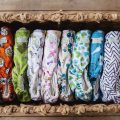Keeping nappy rash at bay
With all the added pressures and worries parents are facing at the moment, the last thing you want is to find your baby is suffering from nappy rash. Luckily, there are some simple things to keep an eye on, which could make all the difference.
Heather Morris, resident midwife at nappy cream brand Metanium explains common mistakes and misunderstandings in nappy changing routines that could be heightening your baby’s risk of getting nappy rash.
“Most babies will get nappy rash at some point. Although it is common and mild cases are easily treatable, it can be a cause for concern. At any one time around one in three nappy-wearing infants will have nappy rash, with girls and boys equally affected.
There are some simple changes any parent can make to lessen the chances of their baby getting nappy rash. Below are some common mistakes often made during a nappy change, with easy tips to fix them and prevent your baby’s chances of getting nappy rash!”
The nappy you are using
• Nappies with a higher absorbency are more effective than reusable nappies for preventing nappy rash, as they are better at keeping excessive moisture away from your baby’s skin.
Always having your baby in a nappy
• Leaving your baby with no nappy on for a while can also help prevent nappy rash, as it lets their skin breathe and dry out, preventing nappy rash which is commonly caused by excess moisture on the skin.
The use of baby soap/lotion
• Potential irritants such as soaps and bubble baths should be avoided when your baby has nappy rash, and use them minimally to prevent it. Such toiletries can irritate baby’s sensitive skin, enhancing the risk of nappy rash. Always try to use fragrance-free toiletries on your baby’s skin.
Which baby wipes you’re using
• Nappy rash can be prevented by using water based or fragrance- and alcohol-free baby wipes which are more sensitive to your baby’s skin. Heavily fragranced or alcohol-based wipes are potential irritants for baby’s skin and can worsen nappy rash.
How you’re changing your baby
• Though simple, the way you change your baby’s nappy can affect its chances of getting nappy rash. Being gentle throughout a nappy change and being cautious not to rub your baby’s bum, but to pat it dry, can stop nappy rash occurring.
Using a preventative nappy cream rather than a treatment
• When nappy rash occurs, many parents rush to use a nappy-rash treatment cream. To prevent nappy rash, try to use a protective barrier ointment with every nappy change. When nappy rash does occur, use nappy rash ointment to quickly soothe and treat the rash.
Not taking into account your baby’s stage of development
• Nappy rash can be more common when your baby is weaning or teething, as these stages can cause diarrhoea and frequent stools. If your baby is poorly, has a cold or is on antibiotics, these can also be times when nappy rash is more likely to strike.
How often you’re changing their nappy
• Although obvious, changing your baby’s nappy frequently can prevent nappy rash. When your baby first starts to sleep through the night, nappy rash is more likely to occur due to prolonged skin exposure to excess moisture.
“Most cases of nappy rash are mild and easily treated by parents without the need for referral. Despite being a cause for concern, uncomplicated nappy rash should settle with the appropriate treatment, and typically lasts about three days.”






